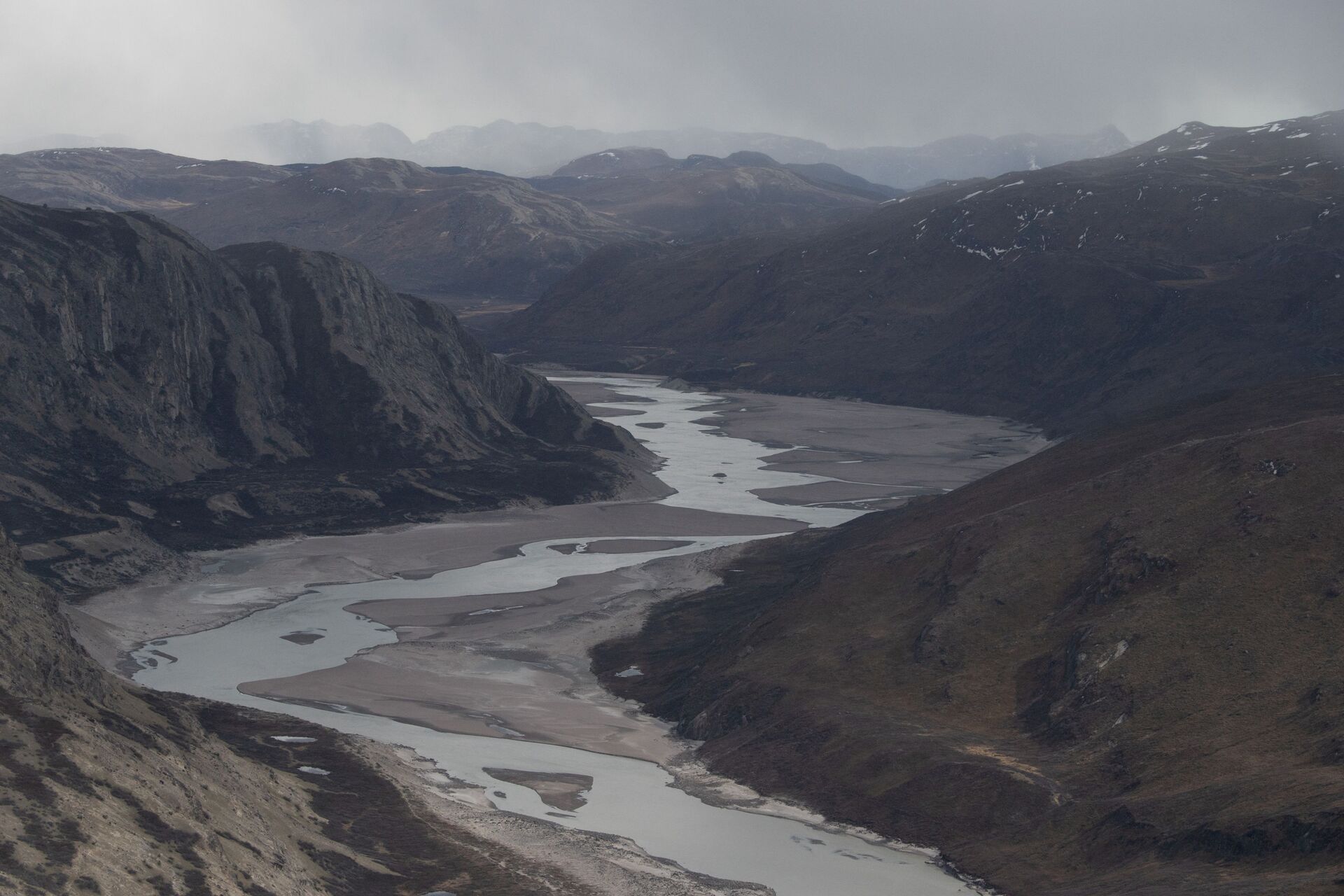'Unprecedented' Rain Deluge in Icy Greenland More Than 'Wandering Climate Pattern', Warn Scientists
06:48 GMT 20.08.2021 (Updated: 13:01 GMT 23.11.2022)

© REUTERS / Lucas Jackson
Subscribe
Earlier, a United Nations Intergovernmental Panel on Climate Change report released in August concluded that the burning of fossil fuels had resulted in Greenland increasingly losing its ice mass over the past two decades.
Greenland’s summit, where temperatures rarely creep above freezing, on 14 August experienced its heaviest rainfall on record, according to the National Snow and Ice Data Center. In less than a decade, this was only the third time snow had given way to rain on the highest point on the Greenland ice sheet.
On August 14, 2021, temperatures rose above freezing on the summit of Greenland, fueling a rain event that dumped 7 billion tons of water—the heaviest since records began in 1950. pic.twitter.com/EyTDhS80f5
— National Snow and Ice Data Center (@NSIDC) August 18, 2021
Scientists confirmed on Wednesday that rain was observed at Summit Station research facility, operated by the National Science Foundation. The ice mass accordingly lost on Sunday was estimated to be seven times higher than the daily average for this time of year. The rain had been fueled by warmer-than-usual temperatures registered over the weekend.
On August 14, 2021, temperatures rose above freezing on the summit of Greenland for only the third time this decade. But for the first time on record, rain fell at @NSF Summit Station. Read the full Greenland Today report: https://t.co/dVzhYSgefm pic.twitter.com/ctyMMILn9e
— National Snow and Ice Data Center (@NSIDC) August 18, 2021
Ted Scambos, a senior research scientist at the National Snow and Ice Data Center at the University of Colorado, believed that the rain was further evidence that Greenland is warming rapidly.
"What is going on is not simply a warm decade or two in a wandering climate pattern… This is unprecedented," he was cited as saying by CNN.
Jennifer Mercer, program officer for the Office of Polar Programs at the National Science Foundation, said the developments would require operational changes at the Summit Station.
"It means that we need to consider weather events that we have not had to deal with before in the history of our operations there. Increasing weather events including melting, high winds, and now rain, over the last 10 years have occurred outside the range of what is considered normal. And these seem to be occurring more and more," said Mercer.
Ice loss has been rapidly increasing in the wake of human-caused climate change that warms the planet, claim scientists. According to a UN climate report released this month, burning of fossil fuels triggered increased melting of the ice sheet of Greenland over the past two decades. A study published in the journal Cryosphere claims our planet overall has lost 28 trillion tonnes of ice since the mid-1990s. Most of this is from the Arctic, including the Greenland ice sheet.

Areas of Greenland are seen from an aerial helicopter tour near Kangerlussuaq, Greenland, May 20, 2021.
© REUTERS / Saul Loeb/POOL
Last month, in the third instance of extreme melting in the past decade, the Greenland ice sheet lost over 8.5 billion short tonnes of surface mass in a single day. In 2019, Greenland is estimated to have lost 532 billion short tonnes of ice into the sea in the wake of an unexpectedly hot spring and a July heat wave. As a result, the global sea level rose permanently by 1.5 millimeters.
"We are crossing thresholds not seen in millennia, and frankly this is not going to change until we adjust what we're doing to the air," said Ted Scambos.


